
A subprefect is a senior government official in several countries at the local level, such as Brazil and France.

A subprefect is a senior government official in several countries at the local level, such as Brazil and France.
In Brazil, a subprefect (subprefeito) is the highest official of a subprefecture, which is a subdivision of certain large municipalities (São Paulo, Rio de Janeiro). The subprefect serves under the municipality's prefect (prefeito).
In France, a subprefect (sous-préfet, [supʁefɛ] ) is the top official in a departmental arrondissement that is not the arrondissement of the prefecture. The subprefect, who is appointed by the President of France, serves under the department's prefect (préfet). [1]

In the administrative divisions of France, the department is one of the three levels of government under the national level, between the administrative regions and the communes. There are ninety-six departments in metropolitan France, with an additional five overseas departments, which are also classified as overseas regions. Departments are further subdivided into 333 arrondissements and 2,054 cantons. These last two levels of government have no political autonomy, instead serving as the administrative basis for the local organisation of police, fire departments as well as, in certain cases, elections.
A prefecture is an administrative jurisdiction traditionally governed by an appointed prefect. This can be a regional or local government subdivision in various countries, or a subdivision in certain international church structures, as well as in antiquity a Roman district. The term prefecture is used for the modern first-level subdivisions of the Central African Republic, Japan, and Morocco.

In France, a prefecture may be:

Prefect is a magisterial title of varying definition, but essentially refers to the leader of an administrative area.
A subprefecture is an administrative division of a country that is below prefecture or province.
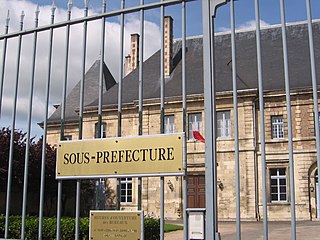
In France, a subprefecture is the commune which is the administrative centre of a departmental arrondissement that does not contain the prefecture for its department. The term also applies to the building that houses the administrative headquarters for an arrondissement.
An arrondissement is the third level of administrative division in France generally corresponding to the territory overseen by a subprefect. As of 2023, the 101 French departments are divided into 333 arrondissements.

A prefect in France is the State's representative in a department or region. Regional prefects are ex officio the departmental prefects of the regional prefecture. Prefects are tasked with upholding the law in the department they serve in, including controlling the actions of local authorities. Prefects are appointed by decree by the President of France when presiding over the government's Council of Ministers, following a proposal by the Prime Minister and the Minister of the Interior. They serve at the government's discretion and can be replaced at any meeting of the Council of Ministers.

Sambre-et-Meuse was a department of the French First Republic and French First Empire in present-day Belgium. It was named after the rivers Sambre and Meuse. It was created on 1 October 1795, when the Austrian Netherlands and the Prince-Bishopric of Liège were officially annexed by the French Republic. Prior to this annexation, the territory included in the department had lain in the County of Namur, the Prince-Bishopric of Liège and the Duchies of Brabant and Luxembourg.

Simplon was a department of the First French Empire. It was named after the Simplon Pass. It was formed in 1810, when the Rhodanic Republic was annexed by France. Its territory corresponded with that of the present-day Swiss canton of Valais.

Ourthe was a department of the French First Republic and French First Empire in present-day Belgium and Germany. It was named after the river Ourthe (Oûte). Its territory corresponded more or less with that of the present-day Belgian province of Liège and a small adjacent region in North Rhine-Westphalia in Germany. It was created on 1 October 1795, when the Austrian Netherlands and the Prince-Bishopric of Liège were officially annexed by the French Republic. Before this annexation, the territory included in the department had lain partly in the Bishopric of Liège, the Abbacy of Stavelot-Malmedy, the Duchies of Limburg and Luxembourg, and the County of Namur.
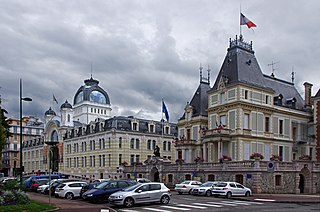
An administrative centre is a seat of regional administration or local government, or a county town, or the place where the central administration of a commune, is located.

The constitution divides Cameroon into 10 semi-autonomous regions, each under the administration of an elected Regional Council. A presidential decree of 12 November 2008 officially instigated the change from provinces to regions. Each region is headed by a presidentially appointed governor. These leaders are charged with implementing the will of the president, reporting on the general mood and conditions of the regions, administering the civil service, keeping the peace, and overseeing the heads of the smaller administrative units. Governors have broad powers: they may order propaganda in their area and call in the army, gendarmes, and police. All local government officials are employees of the central government's Ministry of Territorial Administration, from which local governments also get most of their budgets.

Dakar Department is one of the Departments of Senegal, located in the Dakar Region.
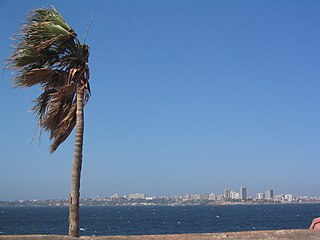
Dakar-Plateau is an arrondissement in the Dakar Department, and forms the central district of the city of Dakar.

Ekondo-Titi is a commune and arrondissement in the Ndian department, Southwest Province, western Cameroon.
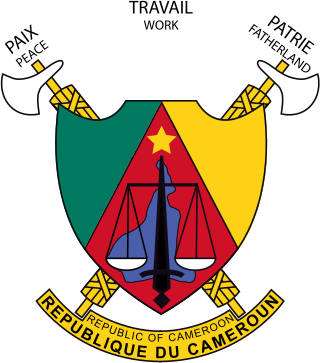
The Republic of Cameroon is a decentralized unitary state.

The Arrondissement de Cologne was an administrative district of the Département de la Roer from 1798 to 1814 which was subdivided into cantons.
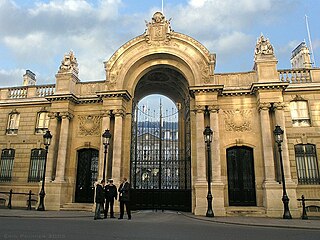
As the capital of France, Paris is the seat of France's national government. For the executive, the two chief officers each have their own official residences, which also serve as their offices. The President of France resides at the Élysée Palace in the 8th arrondissement. The Prime Minister's seat is at the Hôtel Matignon in the 7th arrondissement. Government ministries are located in various parts of Paris. Many are located in the 7th arrondissement, near Matignon.

The Departmental Council of Nord is the deliberative assembly of the French department of the Nord, the most populous French department. The headquarters of this decentralized local authority are in Lille.